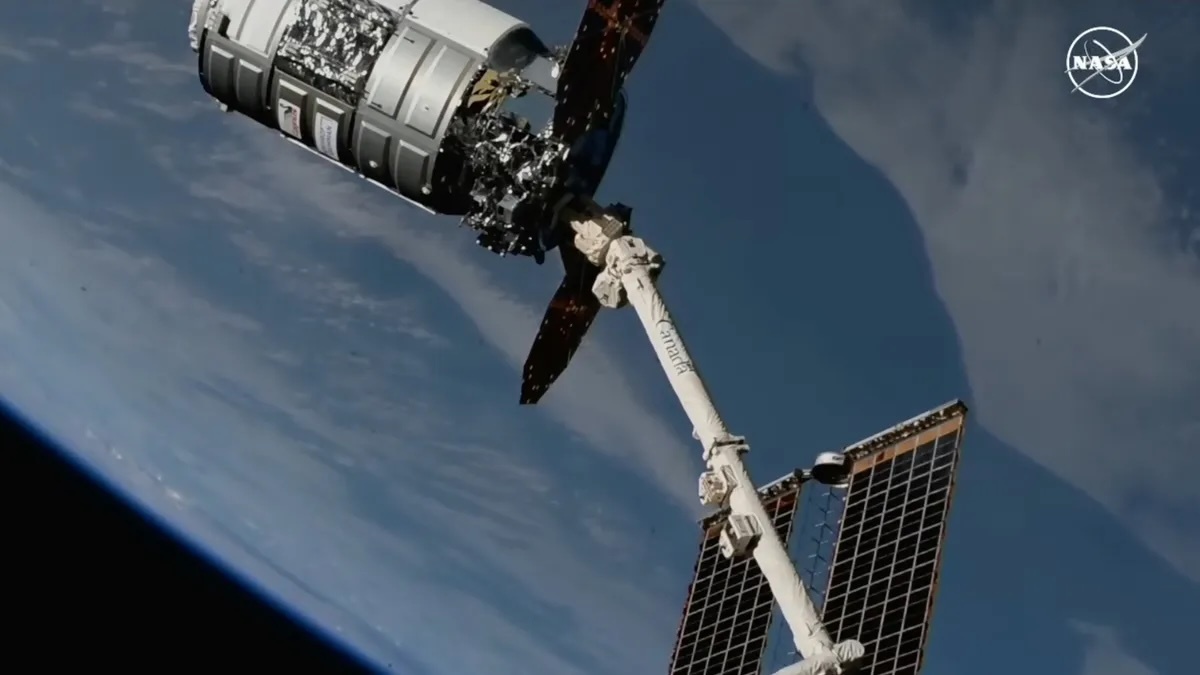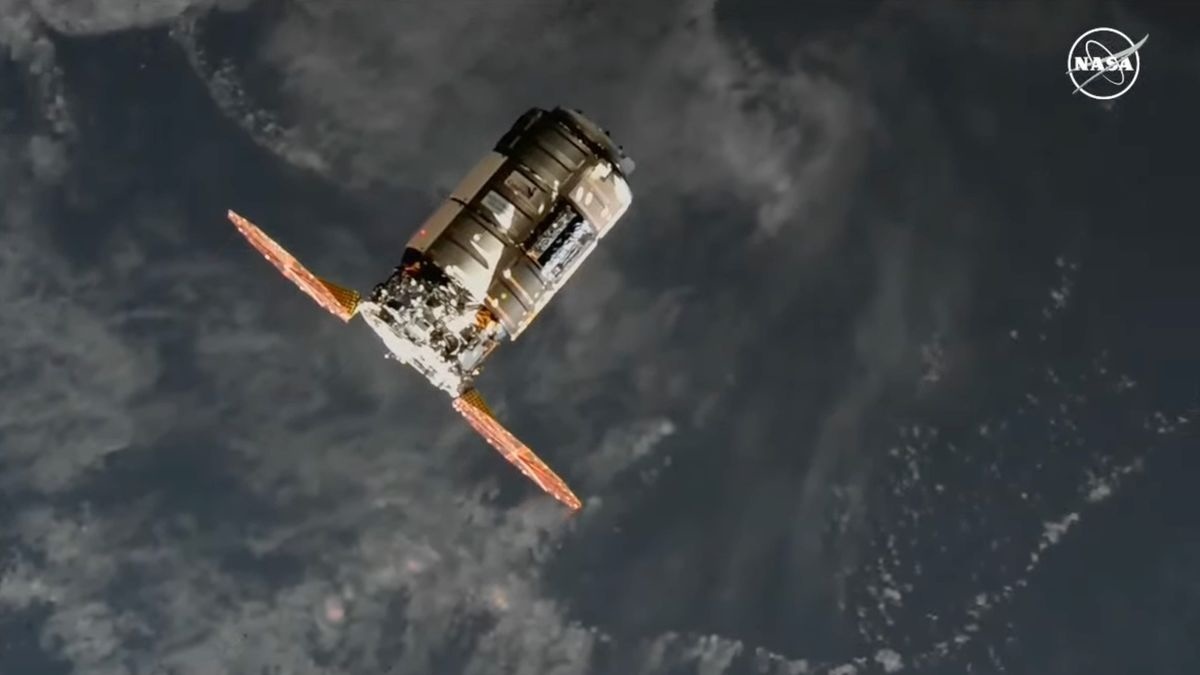7.08.2024
Cygnus was captured by the station's robotic arm at 3:11 a.m. ET on Tuesday (Aug. 6)

Northrop Grumman's Cygnus cargo spacecraft is captured by the International Space Station's robotic arm on Aug. 6, 2024. (Image credit: NASA)
Northrop Grumman's robotic Cygnus freighter reached the International Space Station (ISS) early Tuesday morning (Aug. 6), carrying about 4 tons of supplies to the orbiting lab.
The Cygnus, which launched atop a SpaceX Falcon 9 rocket on Sunday (Aug. 4), was captured by the station's robotic arm on Tuesday at 3:11 a.m. (0711 GMT), as the duo were flying over the South Atlantic Ocean.
The freighter — named the S.S. Richard "Dick" Scobee, after the commander of the tragic STS-51-L mission of the space shuttle Challenger — delivered nearly 8,200 pounds (3,720 kilograms) of food, scientific gear and other supplies to the ISS.

Northrop Grumman's Cygnus cargo spacecraft approaches the International Space Station's robotic arm on Aug. 6, 2024. (Image credit: NASA)
Among the experiments is Rotifer-B2, which will study how spaceflight affects DNA repair mechanisms in the rotifer species Adineta vaga.
"These tiny but complex organisms are known for their ability to withstand harsh conditions, including radiation doses 100 times higher than human cells can survive," NASA officials wrote in a description of the current cargo mission, which is known as NG-21, because it's the 21st ISS flight for a Cygnus vehicle.
Rotifer-B2 "could improve the general understanding of DNA damage and repair mechanisms for applications on Earth," they added.
The S.S. Richard "Dick" Scobee didn't have a perfectly smooth ride to the ISS. Shortly after deploying from the Falcon 9's upper stage on Sunday, the freighter missed a planned engine burn. The Cygnus then aborted the rescheduled burn 50 minutes later after detecting slightly lower-than-expected pressure readings.
But Northrop Grumman engineers evaluated the data and confirmed that the pressure readings were acceptable after all, NASA officials announced in an update today (Aug. 5). Cygnus performed two engine burns and got itself on course for its ISS rendezvous.
Quelle: SC
